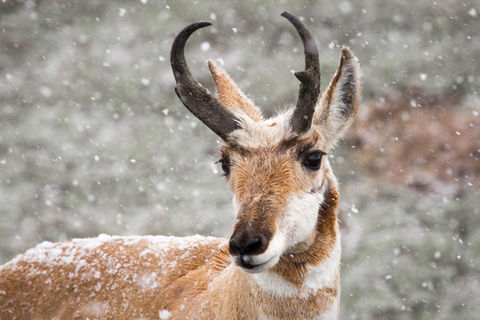Protecting
vulnerable ecosystems
in Yellowstone
Yellowstone National Park sits in one of the last nearly intact temperate ecosystems on the planet. And it’s home to some of the continent’s most charismatic wildlife, like bison and grizzly bear, species once on the very brink of extinction.
The Greater Yellowstone Ecosystem is intact because of the determination of citizens and scientists who have supported, preserved, reintroduced, and managed these critical species and habitats-otherwise it would be lost.
EPI’s programming develops this conservation mindset by engaging local students in scientific research and providing deep experiences with the natural world. These students arrive in the field as inquisitive youth and emerge as empowered, inspired conservation leaders.
Beyond
the Fieldwork
Life-changing experiences in the field are continued through in-depth alumni programs, like the Bitterroot Wildlife Internship, which provide students with a more extended and self-driven experiences in ecological studies and conservation service.
EPI's alumni opportunities build on our core educational programs, deepening the impact on our students. Through independent research projects and mentorship with scientists, these programs change lives.
Meet some of our alumni and the wildlife they're working to protect.
A Summer Internship for our Alumni!
The Bitterroot Wildlife Internship (BWI) is an intensive, 4-week long internship focused on ecological education, conservation service, and hands-on research at the MPG Ranch in Lolo, Montana.
The internship provides high school students the opportunity for one-on-one interaction with scientists that are conducting on-going studies. The experience culminates in a symposium-style poster session, open to the public, where interns share the findings of their own independent projects.
RESEARCH PARTNERS
B Bar Ranch
Custer-Gallatin National Forest (Gardiner Ranger District)
National Parks Conservation Association
Yellowstone Bear Management Team
Yellowstone Bison Management Team
Yellowstone Wolf Project
FUNDERS
Alps Corporation
Anonymous Donor (2)
Cinnabar Foundation
Cross Charitable Foundation
First Interstate BancSystem Foundation
First Interstate Bank of Billings
High Stakes Foundation
The Lightfoot Foundation
Llewellyn Foundation
Park County Community Foundation
Patagonia
Rick McIntyre
Sandy & Kevin Phillips
State of Montana GEAR UP Program
The William H. and Margaret M. Wallace Foundation
The William H. & Mattie Wattis Harris Foundation

















